Quietly signalling this year’s ArchiBuild Expo’s galvanising optimism, The Workshop’s fleeting presence leaves the industry with a particularly lasting and resonant message: zero-waste is not only possible but scalable.
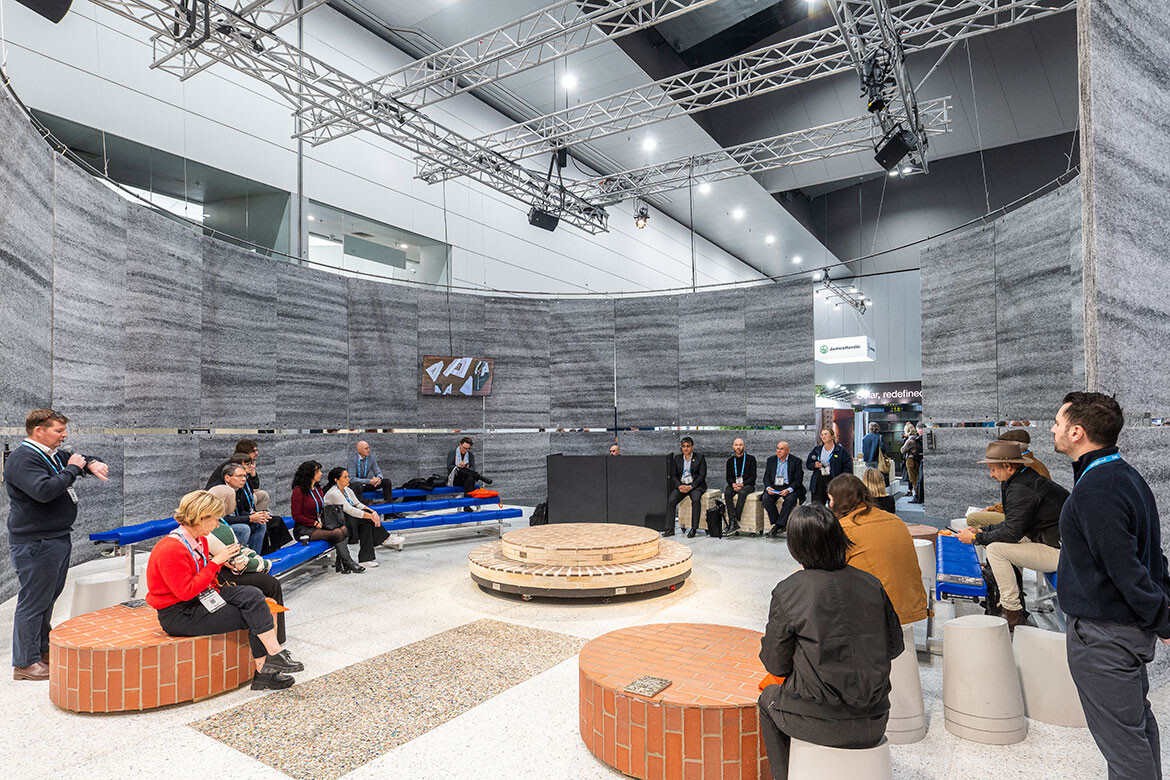
July 17th, 2025
ArchiBuild Expo is one of the most celebrated architecture and design events in Australia, attracting thousands of industry professionals from around the country with a three-day, action-packed programme every year. Galvanised by the enthusiastic cadence of constant conversations, pulsing with the efficient rhythm of last-minute assembly and illuminated by the dazzling glare of LED screens, the vast interiors of the Melbourne Convention and Exhibition Centre come alive in an amalgamation of voices, sounds and sensations coalescing under one roof, united in a shared vision for a more sustainable built environment.
It is amidst this vibrant buzz of this year’s ArchiBuild Expo that The Workshop, an installation designed by the global architecture studio Hassell as part of the ‘Future Build’ precinct, quietly made a particularly resounding statement.
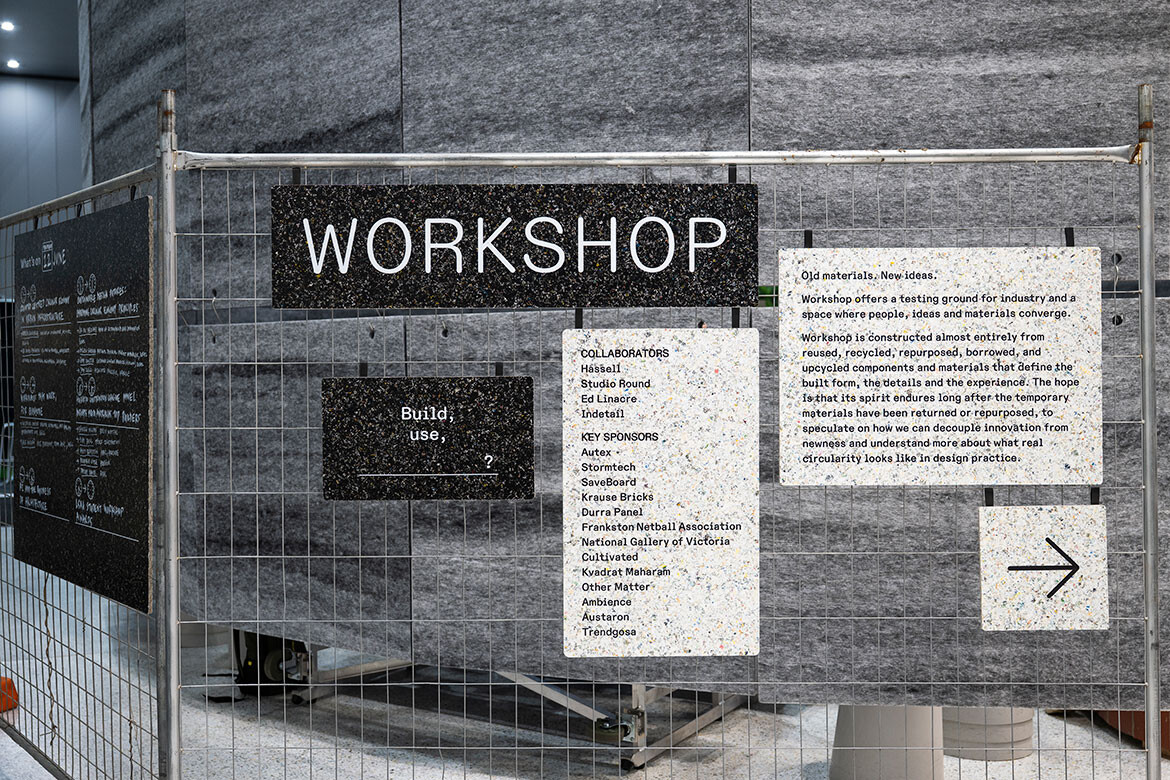
Conceived in just three days, in a collaborative flurry of innovation, focused speed and ingenuity, this meticulously constructed acoustic haven was designed to host talks, round tables and live demonstrations, amidst the business of the 72-hour-long Expo.
And while its undeniable versatility made it one of the most popular destinations at this year’s event, it was The Workshop’s quiet vanishing act that turned out to be its most resounding statement. Because for it to be gone – not just disassembled and deconstructed, but disappeared completely, leaving behind no material footprint and no ghost in the landfill – was the installation’s singular design purpose.
Echoing the Expo’s ethos
By posing the critical question of “how do we create beautiful, functional and sustainable spaces while leaving no trace behind?” the installation augmented the event leadership’s goal to confront the industry’s entrenched “make-take-waste” model. As an extension of this ambition, the Expo’s ‘Future Build’ precinct served as an experimental ground, inviting designers to explore what’s possible with circular materials and design for disassembly.
For the Hassell design and sustainability team, a creative force led by Prue Pascoe and Sian Willmott alongside Samantha Peart and Josephine Gillard, the project’s compressed lifecycle offered the perfect launchpad to test their core philosophy. “While it was a temporary space, our ambition was to create something with a lasting impact,” explains Sian, Hassell’s Sustainable Design Leader. “Beyond the functional requirements of seating and AV integration within a bustling exhibition hall, we saw an opportunity to create a platform for championing sustainability.”
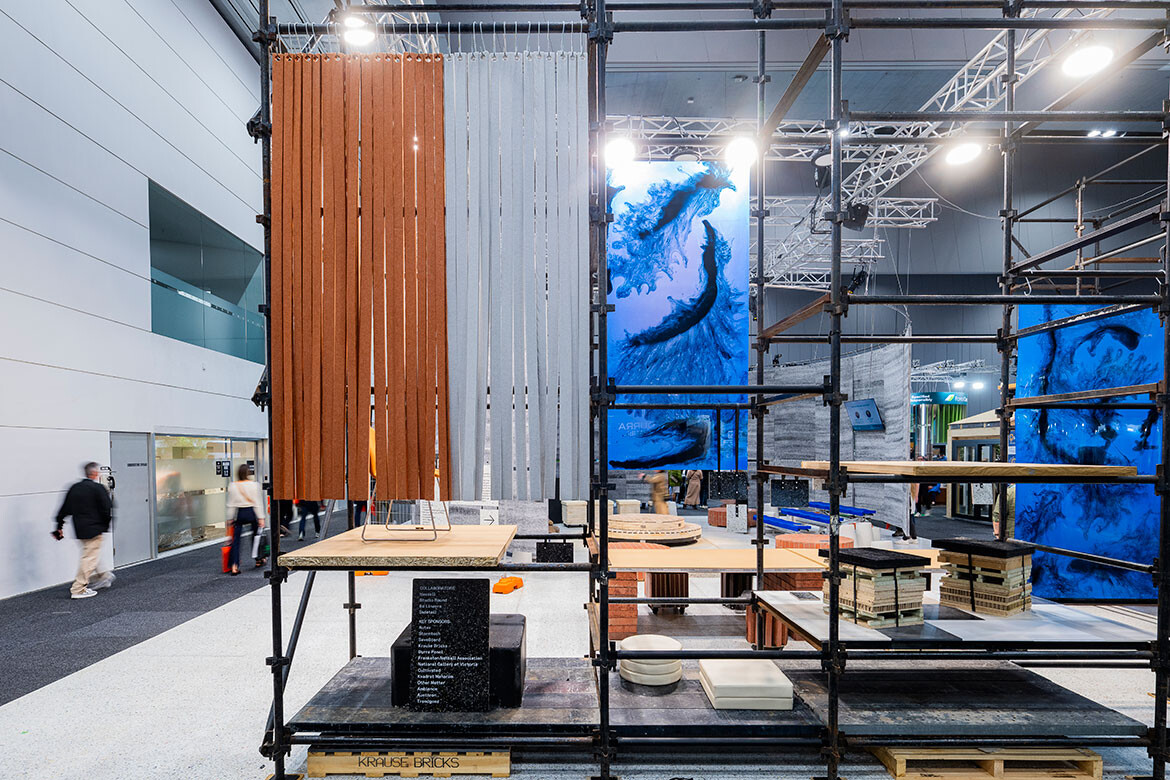
Solving problems, shifting perspectives
Guided by strategic input from Studio Round and support from the Future Build team, Hassell deployed its signature systems-based design process – a methodology that moves beyond the immediate brief to consider the complex web of relational systems a project inhabits.
“This approach helps us identify the stresses and opportunities,” Sian elaborates. “Here, the stress was the inherent waste of a three-day exhibition, and the opportunity was to shift how thousands of visitors relate to materials and sustainability. It became a proof-point for how a systems-based approach can deliver responsive, regenerative and enduring outcomes.”
Sian adds that this resolve was rooted in some genuinely sobering statistics. “Australia’s circularity rate is just 4.4%, meaning 95% of the materials we utilise are single-use,” she states. “This represents a systemic failure that the design industry is uniquely positioned to address. The materials we’ve already extracted, processed and transported retain value, yet so much ends up in landfill,” Sian continues. “The most sustainable thing we can do is extend the life of existing materials at their highest and best use, rather than expending more energy to downcycle them.”
From this rigorous, data-driven thinking, a simple, radical concept was born – to create a beautiful, functional space with zero waste.
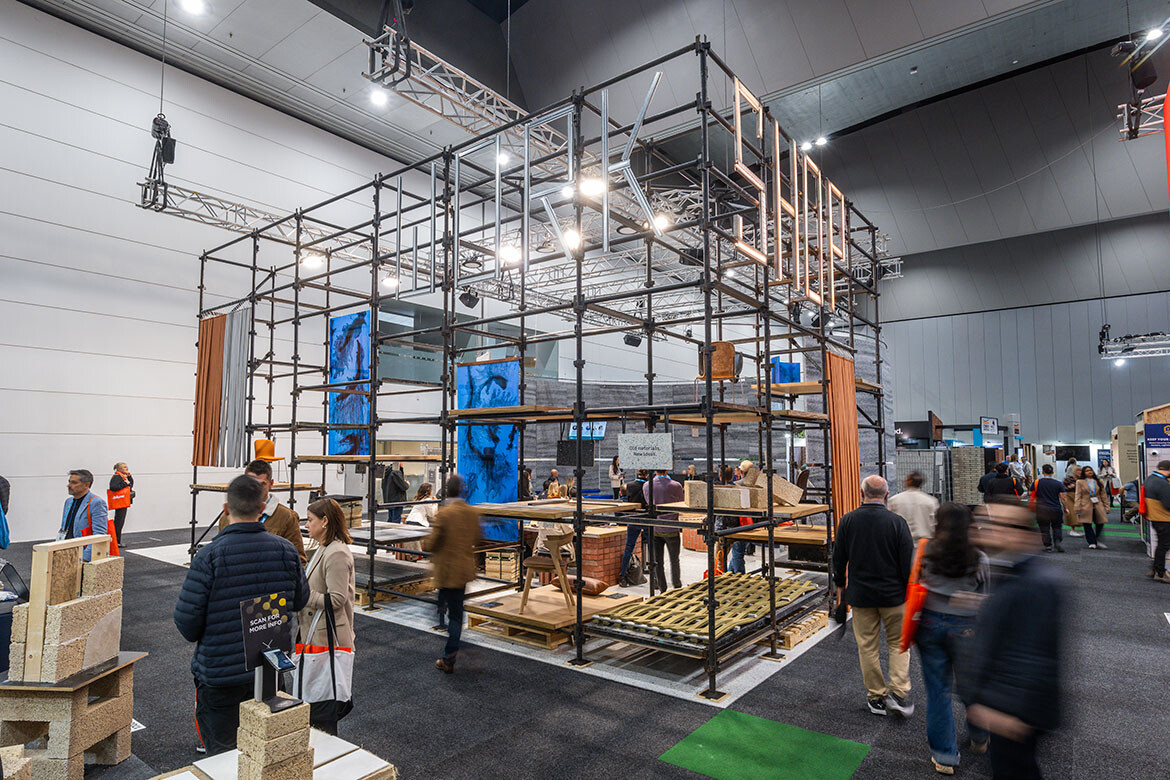
Closed loops, open minds
With a mission of absolute circularity, Hassell deliberately sought collaborators already within the expo’s ecosystem — and Ash North, ArchiBuild’s inspired Event Director, was there to help make these pivotal connections. Knowing Autex Acoustics’ highly regarded sustainability credentials were a perfect match for Hassell’s conceptual vision, she connected the two like-minded teams, turning a shared ethos into a tangible partnership.
The initial acoustic design idea was an exercise in pure upcycling – to construct the hub’s enclosure using surplus strips of Autex’s celebrated Cube panels. However, the design process, like circularity itself, is rarely linear, and in this instance, it took the team in a different direction. “When we first proposed the idea, the Autex team prototyped it for us, which is how we collectively discovered the solution wouldn’t work as intended,” Sian recalls.
But a moment that could have been a setback instead became a catalyst for deeper collaboration. Guided by the expertise of Rob Jones, Technical and Development Manager at Autex Acoustics, the team arrived at a solution that was even more thematically resonant and aligned with Hassell’s unwavering commitment to creating a fully circular space: the ASL panels.
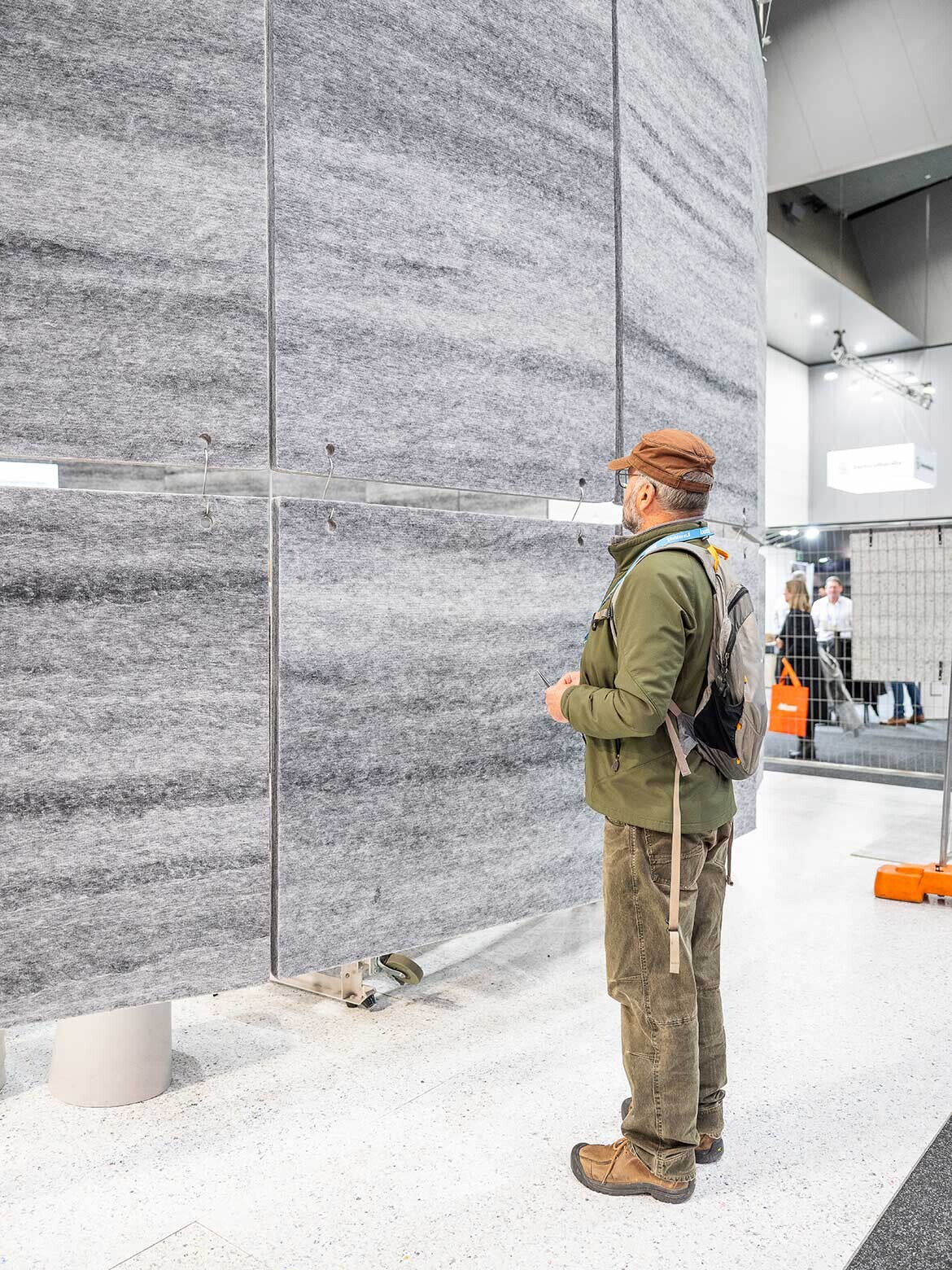
Borrowed: the new “new”
“We learned that Autex has a near-zero-waste manufacturing process,” Sian enthuses. “The very off-cuts we planned to use are actually reprocessed into their ASL product.” Autex’s Acoustic Soffit Liner (ASL) panels are a key component of the company’s pioneering Takeback Programme, an initiative where uncontaminated ASL panels and manufacturing off-cuts are collected and reprocessed into new products like ASL Reclaim.
“It meant we could confidently use a ‘new’ product, knowing that, once the Expo was over, the panels would be returned to Autex to re-enter the production cycle,” Sian says. “That closed-loop thinking aligned perfectly with our concept.”
In an embodiment of a revolutionary “product as service model,” the team chose to “borrow” Autex’s large, high-performing ASL panels that create a robust thermal and acoustic cocoon around the presentation space.
Functionally, this was essential – in the vast, cavernous space of the convention centre, the panels, integrated as one of the installation’s key features, dulled the surrounding noise, transforming the space into a retreat-like haven amidst the buzz of the expo.
But Sian adds with a smile, the visual allure of the original off-cuts was not forgotten. “Prue, our lead designer, was still drawn to the beauty of the Cube panel offcuts, so we asked Autex to bring them anyway,” she explains. In a captivating display of on-site creative thinking, the design team used the strips to weave compelling moments of floating tapestry into the display, which, Sian says, speaks to the fluidity of a design process rooted in the principles of beauty, function and sustainability.
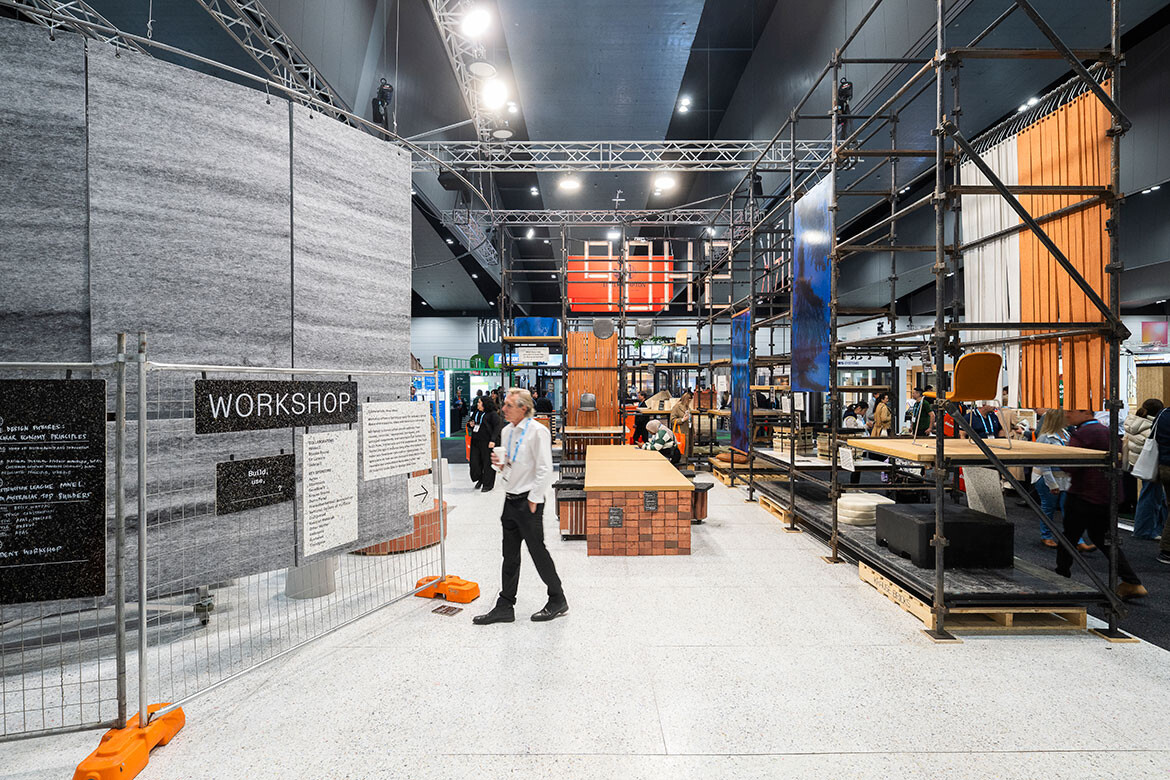
Lasting lessons on disappearing
Today, by design, The Workshop is gone, in every sense of the word. And while no physical trace remains, this compelling initiative leaves behind a set of replicable ideas for the broader architecture and design community. The first one? Sian doesn’t hesitate. “Circularity can be beautiful,” she says. The Workshop masterfully subverted the perception that sustainable design is aesthetically raw, proving it can be refined, sophisticated and deeply desirable.
Secondly, the project redefined circularity as an act of “stewardship,” moving beyond simple recycled content to a more profound commitment to maintaining a material’s highest and best use. Thirdly, Sian adds, the Workshop clearly accentuated the many pathways to circularity. The material borrowing model – aptly demonstrated by Autex’s Takeback Programme – emerges as a game-changer, shifting economic incentives to reward durability and disassembly and offering a vital lesson as the industry grapples with the enormous waste produced by commercial fit-outs.
Eco over ego
Finally, and most fundamentally, Sian notes, this undertaking proved that it’s collaboration that unlocks genuine change. The fluid partnership between Hassell, Autex and other like-minded collaborators serves as the project’s central proof point – when a clear, ambitious intent is shared, the whole team is not just willing but energised to co-create solutions.
“It was a warm, friendly collaboration with no egos,” Sian explains. “Every scrap, including the punched-out holes, was collected in a box and returned to Autex’s stand. That kind of environment is what creates movements to do better in our industry.”
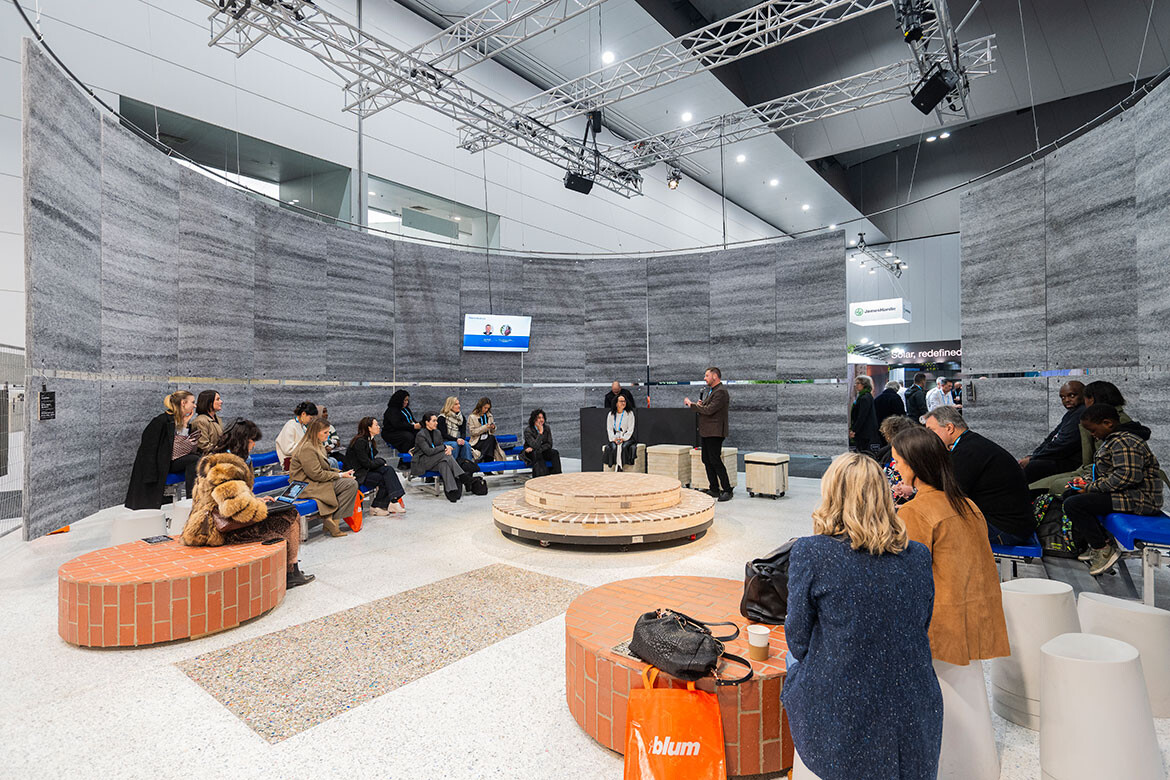
Scaling systems, not specific solutions
For an industry built on permanence, there is profound strength in knowing how to disappear responsibly. So, how can this thinking leap from a temporary pop-up that vanished without a trace to the long lifecycle of our built environment?
“It’s all about the process,” Sian offers. “What is scalable is the systems-based approach. It’s not about mirroring a specific aesthetic but about replicating a more profound way of thinking. With fit-out churn in Australia happening roughly every seven years, our industry has a tremendous influence on what our landfills and our circular economy look like. We should be at the forefront of changing how we value materials.”
Gone, not wasted
With approximately 99% of its materials diverted from landfill, The Workshop’s flawless vanishing act is irrefutable proof that almost zero waste is not just an ideal, but a tangible reality. For Sian and the Hassell team, however, the project delivered an even more potent reward – a vindication of their core belief that this process is scalable and ready to be applied to projects of any scale or duration.
Co-authored by Hassell’s visionary process and material innovation from partners like Autex, this fleeting space has left behind a lasting and resonant silence – the quiet confidence of a problem solved and a new benchmark set. It emerges as a powerful rearticulation of the word “gone.” It no longer means “wasted” – instead, it means returned, reimagined and reborn.
INDESIGN is on instagram
Follow @indesignlive
A searchable and comprehensive guide for specifying leading products and their suppliers
Keep up to date with the latest and greatest from our industry BFF's!

Schneider Electric’s new range are making bulky outlets a thing of the past with the new UNICA X collection.
The new range features slabs with warm, earthy palettes that lend a sense of organic luxury to every space.

Gaggenau’s understated appliance fuses a carefully calibrated aesthetic of deliberate subtraction with an intuitive dynamism of culinary fluidity, unveiling a delightfully unrestricted spectrum of high-performing creativity.
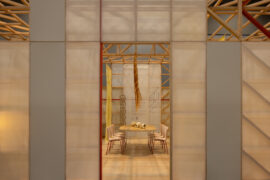
The collaboration between Nexus Designs and Cultivated challenge conventional design practices, offering tangible solutions for the industry’s sustainability challenges.

grovve sets a new benchmark in youth mental wellness design – an empathetic, biophilic sanctuary where mental wellbeing is nurtured through choice, comfort and co-creation.
The internet never sleeps! Here's the stuff you might have missed
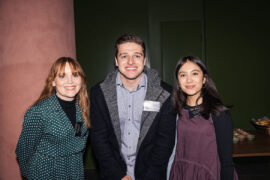
The 2025 INDE.Awards shortlist were celebrated at a beautiful breakfast event in Hyde Melbourne Place. Check out the highlights.

The Naomi Milgrom Foundation has announced that the MPavilion, designed by Tadao Ando, will stay in Queen Victoria Gardens for five more years.